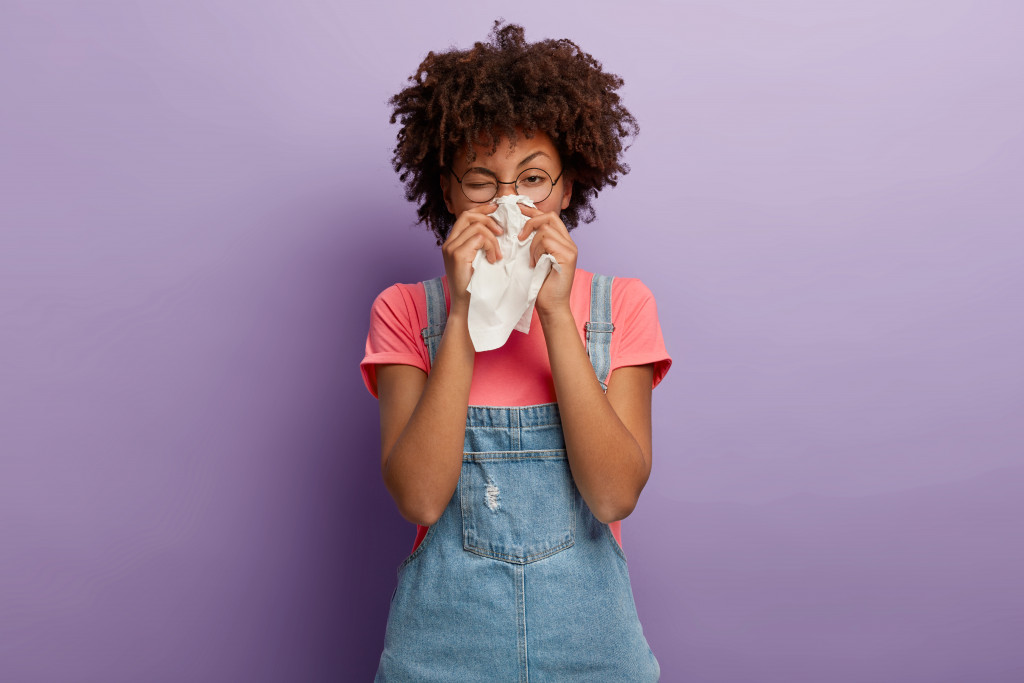You may love your home, but it could make you and your family sick if it contains allergens. Allergens are substances that trigger an allergic reaction. An allergic reaction may be a runny nose, itchy eyes, or difficulty breathing.
Allergies are common among children in the United States, and if you notice that they’re sneezing or having more colds than usual, this could be due to allergies. Here are five reasons your children have allergies and how you can deal with them.
Dust Mites
Dust mites are tiny animals that live in hot, humid climates. They’re frequently discovered in cushions, upholstered furniture, and carpeting. Sleeping in a dusty environment can cause an allergic reaction if you or someone in your family is allergic to dust mites. Here are three ways you can get rid of dust mites:
Wash Bedding
Mites love living inside bedding, so washing bed sheets and pillowcases in hot water daily can help reduce their population.
Use Allergen-Proof Bedding
You can also invest in allergen-proof bedding, which uses a tight weave fabric to prevent dust mites from getting inside.
Vacuum and Clean Regularly
Regular vacuuming and cleaning can also help reduce dust mite populations. Make sure to use a vacuum with a HEPA filter, as this will trap smaller particles such as dust mites.
Mold
Mold is a type of fungus that grows in damp places. It can be found in basements, bathrooms, and kitchens. Mold spores can cause respiratory problems and trigger allergies. Here are some ways you can reduce mold growth in your home.
Fix Leaks
Leaks are one of the main reasons mold grows, so fix any water leaks in your home as soon as possible. You can usually find leaks in your bathroom, kitchen, and basement. If the leaks keep returning, it might be time to change your piping. Installing robust industrial piping for your plumbing can prevent future leaks. This piping is usually made of durable material, such as stainless steel, making them resilient to rust and other elements.
Dehumidifier
Using a dehumidifier can help reduce mold growth if your home has high humidity levels. It does this by removing excess moisture from the air, making it harder for mold to grow. Make sure to clean and maintain your dehumidifier regularly.
Clean Regularly
Regularly cleaning and drying damp areas in your home will also prevent mold growth. Make sure to throw away any moldy materials, such as old rags. Additionally, use mold-killing cleaning products, such as bleach, to clean affected areas.

Pet Dander
If you have pets, you’re probably familiar with pet dander—the tiny flakes of skin that they shed. Pet dander can trigger allergies in people who are sensitive to it. Here are three ways you can reduce pet dander inside your home:
Keep Pets Out of Bedrooms
If someone in your family is allergic to pets, keeping them out of bedrooms and sleeping areas is best. This will prevent them from spreading dander while sleeping or lounging on beds and furniture.
Regular Grooming
Regularly grooming your pet can also help reduce their dander. Brushing their fur regularly removes loose hair and skin particles before they have a chance to spread in your home.
Choose the Right Pets
Lastly, certain types of pets, such as cats and dogs with short hair, tend to have less dander than others. If allergies are a particular concern for your family, consider researching different breeds and their levels of dander before getting a pet.
Smoke
Cigarette smoke is a common trigger for allergies and asthma attacks. If you or someone in your family smokes cigarettes, try to smoke outdoors to minimize the amount of smoke in your home. Additionally, here are ways you can reduce smoke inside your home.
Proper Ventilation
Proper ventilation, such as using an exhaust fan in the kitchen or bathroom, can help reduce smoke inside your home.
Air Purifier
Using an air purifier with a filter to remove cigarette smoke can also help improve indoor air quality.
Pesticides
Lastly, some pesticides contain chemicals that can trigger allergies and asthma attacks. If you use pesticides indoors, open windows to ventilate the area and wash your hands thoroughly. Moreover, you should consider using natural or less-toxic alternatives, such as vinegar or essential oils, to get rid of pests.
Allergies can be miserable—but you don’t have to suffer needlessly. By identifying the sources of allergens in your home and taking steps to reduce them, you can make your home a safer place for everyone who lives there.
